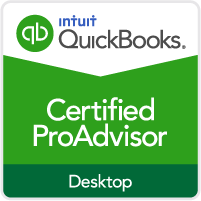Time is money as they say, and if you can save time, you’re also saving money. Since your time is limited to 24/7, both personal and business time saved is profitable. Here are eight ways to save time (and money) for your consideration. Go through all of them with an open mind, and see which one might work best for you.
1. The trip to the grocery store
If you’re making several trips to the grocery store throughout the week, this one is for you. Cut down on those trips by taking inventory of your kitchen and seeing what you’ll need for the week (or longer). Shopping once a week will save precious time throughout the week.
Better yet, have your groceries delivered. Some shops will also pick and bag your times so your selections are ready for pickup. Even better, hire an assistant to shop for you so that your refrigerator and pantry is stocked when you get home.
2. Appointment scheduling
Automate your appointment scheduling and you’ll free up weeks of admin time for either you or your staff. There are dozens of apps, many industry-specific that can help you save time making appointments. Once you’ve set it up, send the link to the people you’ll be meeting and voila, it will appear on your calendar.
Here are a few to check out:
For field service companies in the home repair or maintenance industries that serve commercial and residential customers, Google “field service scheduling” to get the right software for your business.
3. Office supplies
Order your supplies online and have them delivered.
4. Email interruptions
Turn off automatic send and receive in your email software to get rid of that nasty interruption. Mark your calendar to check and answer your email three to four times a day. You’ll go home happier and feeling more in control of your work with this one change.
5. The commute
If you can manage it, working from home one to two days a week can save you commute time. You may also be able to avoid rush hour by altering your work hours if you have some flexibility. After all, it’s your business.
6. Those errands
Batching your errands all into one day will save precious start and stop time on your other work days. Better yet, choose one day a week for outside errands and personal appointments so that you can get into the habit of this for the long term.
7. Takeout
Do you go out for lunch every day? You may need the break or you may need to have that power lunch with a new business partner or client. But on days you don’t, have takeout delivered so you don’t have to waste time ordering and standing in line.
8. The bank
Are you going to the bank constantly? If so, you can avoid it in a number of ways:
• Take credit cards, and have clients pay online.
• Ask your bank about remote or mobile check deposit options.
• Hire a company to transport your cash deposits – Google “Cash logistics” to find companies with armored car services. It won’t hurt to find out how much it costs and you might be surprised.
Did you get an idea on how to save time? If so, it’s your turn to implement and reap the benefits.



 Want a free consultation with us? Give us a call at
Want a free consultation with us? Give us a call at 
